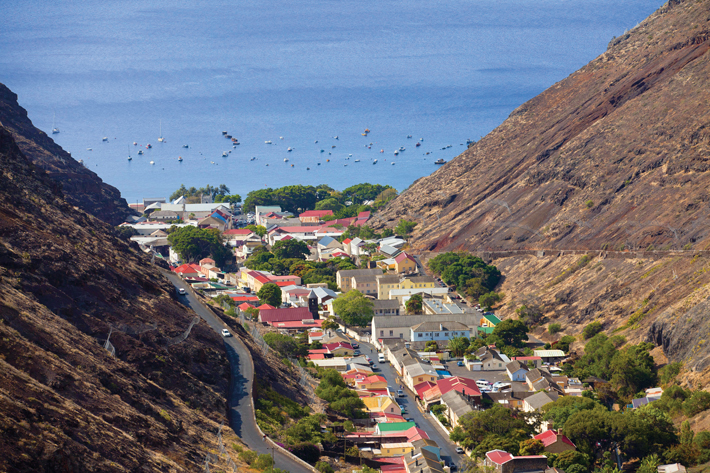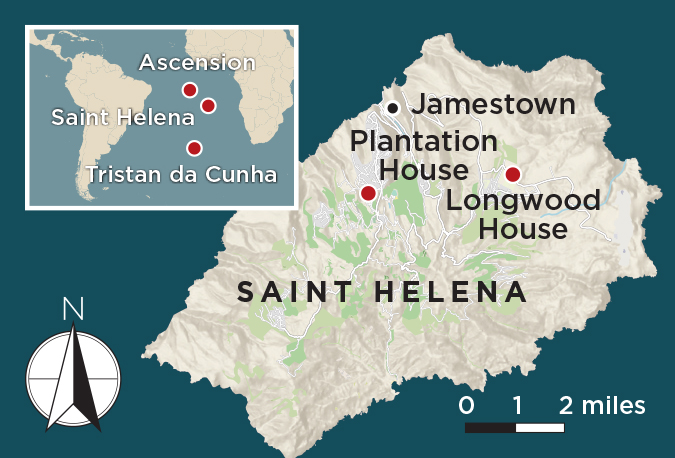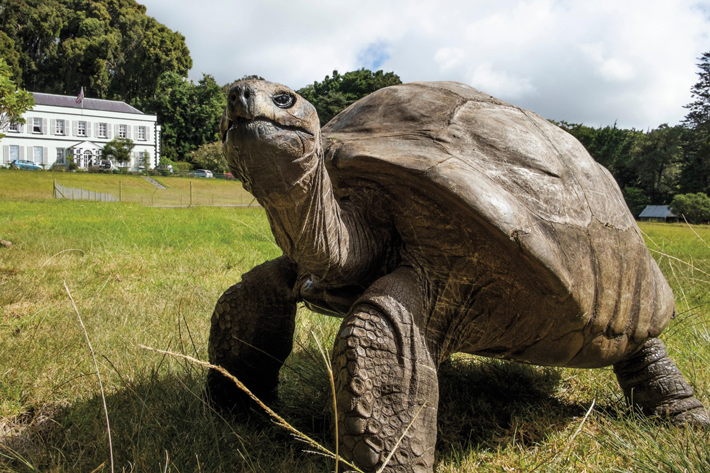Off the Grid
Saint Helena
May/June 2021

 Saint Helena, a tiny volcanic island in the South Atlantic Ocean, roughly midway between southern Africa and Brazil, is a time capsule of the bygone Age of Sail. This British way station, which served as an entrepôt offering fuel, food, and mischief to mariners rounding the Cape of Good Hope, now relies on tourism to sustain its economy. Until an airport opened in 2016, most visitors traveled to the island from Cape Town by boat, a voyage that takes six days. Those who still come to Saint Helena by sea arrive in Jamestown Harbor, where they are greeted by the town’s original eighteenth-century architectural facades and the last surviving East India Company wharf in the world. First discovered by Portuguese navigators in 1502, Saint Helena became a possession of the East India Company in 1659. The island remains a British Overseas Territory, governed together with the equally remote islands of Ascension, some 800 miles to the northwest, and Tristan da Cunha, 1,500 miles southwest.
Saint Helena, a tiny volcanic island in the South Atlantic Ocean, roughly midway between southern Africa and Brazil, is a time capsule of the bygone Age of Sail. This British way station, which served as an entrepôt offering fuel, food, and mischief to mariners rounding the Cape of Good Hope, now relies on tourism to sustain its economy. Until an airport opened in 2016, most visitors traveled to the island from Cape Town by boat, a voyage that takes six days. Those who still come to Saint Helena by sea arrive in Jamestown Harbor, where they are greeted by the town’s original eighteenth-century architectural facades and the last surviving East India Company wharf in the world. First discovered by Portuguese navigators in 1502, Saint Helena became a possession of the East India Company in 1659. The island remains a British Overseas Territory, governed together with the equally remote islands of Ascension, some 800 miles to the northwest, and Tristan da Cunha, 1,500 miles southwest.
Saint Helena is perhaps best known as the place where the deposed French emperor Napoleon Bonaparte was exiled from 1815 until his death in 1821. Longwood House, where the emperor lived—and died two centuries ago this year—is open to the public. Saint Helena is also the final resting place for nearly 10,000 Africans, who were among more than 25,000 captives liberated by the British Navy between the 1840s and 1860s from vessels sailing from Africa to slaveholding territories in the Americas. In grave health as a result of the conditions of the Middle Passage, those buried on Saint Helena perished before they could be resettled to British possessions in the Caribbean. Archaeologist Andrew Pearson, working on behalf of the United Kingdom’s Department for International Development, directed excavations during which human remains discovered on land slated for airport construction were removed and conserved. In addition to skeletal remains, Pearson and his team discovered thousands of glass beads, together with personal adornments such as cowrie shells and bracelets. “These individuals were maybe three or four weeks out of a homeland they’d been cruelly dragged away from,” Pearson says. “These objects show that even supposedly powerless people managed to exercise some agency in their own lives and over their belongings.”
 THE SITE
THE SITE
A number of cruise lines occasionally offer stops in Saint Helena, but the simplest way to reach the island is via direct flights from Johannesburg. Jamestown, the island’s capital and only town, is easily walkable and offers a number of hotels and inns, restaurants, and bars, as well as a museum devoted to the island’s history. Local tour operators can arrange excursions to sites of interest around the island, including Longwood House and Plantation House, the official residence of the governor of Saint Helena, Ascension, and Tristan da Cunha. The governor shares the grounds of Plantation House with Jonathan, a Seychelles giant tortoise hatched in 1832 who is thought to be the world’s oldest living terrestrial animal.
WHILE YOU'RE THERE
Those who are not afraid of heights should be sure to climb Jacob’s Ladder, 699 steps made from the remains of an early nineteenth-century cable railway. The experience offers an elevated heart rate and sweeping views of the island.